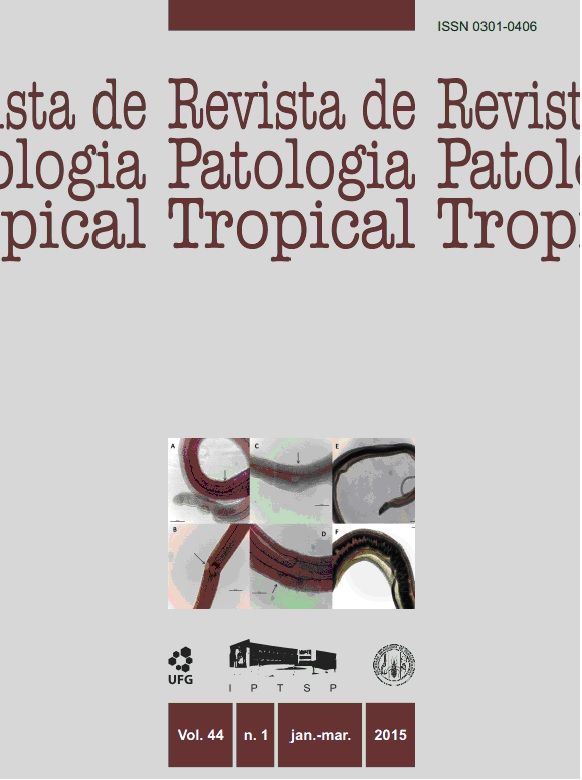Evaluation of the leishmanicidal activity of plant species of the Brazilian savanna
DOI:
https://doi.org/10.5216/rpt.v44i1.34800Keywords:
Leishmania amazonensis, plants, savanna.Abstract
In order to identify chemical properties of plants of the Brazilian savanna (Cerrado) anethnobotanical survey was performed. Seven plant species were selected according to theirindications for antibiotic, anti-inflammatory, analgesic, anti-ophidian and healing properties. The following hydroalcoholic extracts of these plants were tested for activity against promastigotesof Leishmania amazonensis: Terminalia fagifolia Mart. (Combretaceae), Vellozia squamata Pohl.(Velloziaceae), Vochysia haenkeana (Spreng.) Mart. (Vochysyaceae), Siparuna guianensis Aublet(Siparunaceae), Lafoensia pacari St. Hil. (Lythraceae), Galactia glauscecens Kunth. (Leguminosae)and Plathymenia reticulata Benth. (Mimosaceae). The growth inhibitory concentration (IC50)of these extracts was calculated in relation to untreated cultures. Higher efficacy in inducing thedeath of parasites was demonstrated with extracts of L. pacari, G. glaucensces and P. reticulata,which showed IC50 values of 14.6 mg/mL, 46.0 mg/mL and 59.5 mg/mL, respectively. Moderateeffectiveness was shown with T. fagifolia, V. squamata and V. haenkeana extracts, with valuesof 446.1, mg/mL 305.0 mg/mL and 85.1 mg/mL respectively. Phytochemical studies showedthe presence of flavonoids, triterpenoids, steroids and tannins that, according to the literature,are responsible for the leishmanicidal activity. These results indicate the need for future studiesto evaluate the activity of these extracts against infections in vivo, as well as the fractionation ofsubstances, in search of the active components responsible for the leishmanicidal action.Downloads
Downloads
Published
How to Cite
Issue
Section
License
The manuscript submission must be accompanied by a letter signed by all authors stating the full name and email address, confirming that the material has not been published or is under consideration for publication elsewhere, and agreeing to transfer copyright in all media and formats for Journal of Tropical Pathology. The authors will not be paid for published articles. They are solely responsible for the content of those articles, even if the Editor holds the right to adjust them to the norms of the journal.
The reviewers will not be paid for the peer review process.

